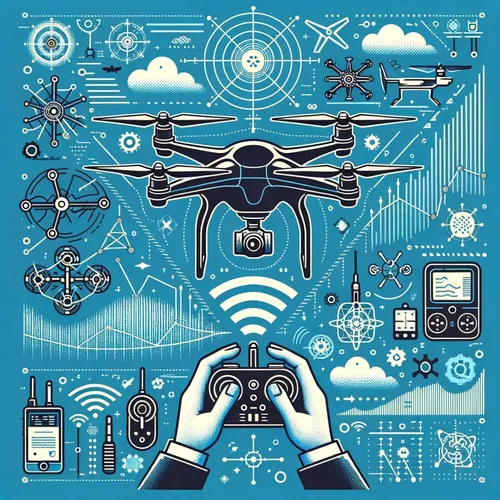Drones Dominate: Skyways Swarming with Enterprise Fleets as Industry Soars Past $50 Billion
- Author
- Quiet. Please
- Published
- Fri 01 Aug 2025
- Episode Link
- https://www.spreaker.com/episode/drones-dominate-skyways-swarming-with-enterprise-fleets-as-industry-soars-past-50-billion--67213199
This is you Commercial Drone Tech: Enterprise UAV Solutions podcast.
Commercial drone technology is transforming industries at a rapid pace, offering enterprise solutions that are becoming indispensable for construction, agriculture, energy, and infrastructure inspection. Recent market analysis from Drone Industry Insights indicates the global commercial drone market is set to surpass 54 billion US dollars by 2030, driven by advances in automation, regulatory clarity, and dramatic improvements in both hardware and data analytics capabilities. In the construction sector, drones enable detailed site mapping, stockpile measurement, and real-time progress updates, reducing survey times from weeks to hours while catching costly errors before ground crews mobilize. Agriculture benefits from multispectral imaging and precision spraying, increasing yields while reducing chemical use and labor. Energy and utility firms employ drones for remote inspection of power lines, wind turbines, and pipelines, slashing operational risk and cutting inspection costs by up to 50 percent according to PwC.
As enterprise organizations expand their drone fleets, streamlined management becomes vital. Industry leaders such as Auterion and Votix now offer unified asset management platforms with predictive maintenance, compliance reporting, and remote operation—allowing integration with existing asset management or ERP systems. Platforms like FlytBase, Dronelink, and Aloft deliver fleet management tools, centralized flight logs, airspace authorization, and real-time risk assessments, supporting regulatory compliance such as FAA Part 107 waivers or Remote ID. According to SafetyCulture, modern drone management software is essential for quality assurance, safety compliance, and reducing downtime, with features mirroring those found in traditional aviation maintenance.
Emerging news in the space includes new FAA exemption frameworks enabling beyond visual line of sight operations for enterprise inspections, DJI’s launch of a next-gen RTK mapping drone for infrastructure companies, and recent partnerships between drone platform providers and agriculture co-ops to broaden AI-driven crop insights.
Implementing an enterprise drone program requires investment in hardware tailored to your operation—selecting airframes and sensor payloads that match the mission profile—and embracing software platforms that automate flight planning, data capture, and compliance documentation. Comprehensive training for pilots and managers, proactive maintenance protocols, and seamless integration with company IT systems are best practice. Security and data privacy cannot be overlooked; ensure your drone ecosystem is compliant with ISO standards and national cybersecurity frameworks.
Looking forward, advancements in swarm robotics, edge analytics, and 5G connectivity promise to further amplify the impact of drone fleets, opening doors to hyper-automated inspections, round-the-clock monitoring, and deeper business process integration. For businesses considering drone adoption or scaling their current programs, the actionable takeaway is to start with a pilot project, invest in robust management and compliance tools, and plan for rapid technology evolution. Thanks for tuning in—come back next week for more. This has been a Quiet Please production, and for more, check out Quiet Please Dot A I.
For more http://www.quietplease.ai
Get the best deals https://amzn.to/3ODvOta
